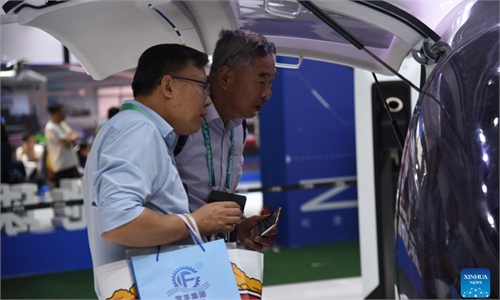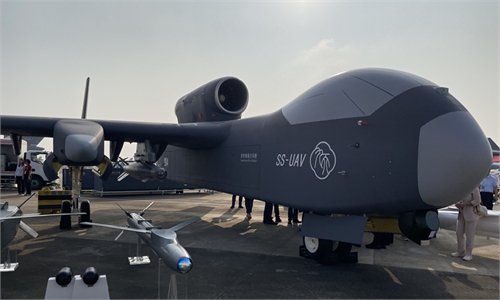US-led tech blockade a catalyst for China’s unprecedented innovation

Aircraft of China's Red Falcon Aerobatic Team conduct adaptive training in Zhuhai, south China's Guangdong Province, Nov. 8, 2024. The 15th China International Aviation and Aerospace Exhibition, also known as Airshow China, was held in Zhuhai from Nov. 12 to 17. (Photo by Xu Yang/Xinhua)
A few days ago, I had the opportunity to attend the biennial Airshow China in Zhuhai, South China's Guangdong Province, a significant event in the global aerospace industry. As I walked through the exhibition, I was enveloped by an awe-inspiring array of cutting-edge technological marvels, each more impressive than the last.
This wasn't just another aircraft-spotting trip. I was there to delve deeper into the heart of China's manufacturing transformation, rather than to chase the J-35, China's stealth fighter. Enough information about that latest fighter jet has been widely spread online.
An important backdrop for this year's airshow is that, in recent years, the US has strictly restricted high-tech exports to China and continuously increased unreasonable sanctions on Chinese enterprises in an attempt to curb the upgrading and breakthroughs of Chinese manufacturing. Companies involved in aerospace and defense are the primary focus of American containment attempt.
However, the exhibition halls and outdoor displays told a compelling story of innovation, which can only be described as a technological breakthrough of epic proportions.
The standout performer was undoubtedly the C919 commercial aircraft, which took center stage with the confidence of a game-changer.
More than just an airplane, the C919 represents an entire industrial ecosystem - a testament to China's manufacturing prowess in everything from engine technology to avionics, and from composite materials to precision components. It's a source of national pride.
The drone pavilion was nothing short of a technological wonderland. From miniature devices to massive platforms, these unmanned systems showcased incredible versatility, serving purposes ranging from military reconnaissance to commercial logistics. What's truly remarkable is how these flying machines have seamlessly transitioned into civilian applications, breaking traditional boundaries.
A few years ago, domestic engine production seemed like an impossible dream. Now, Chinese-made engines are a reality and a source of national pride. The system involved in producing these engines has come together and is now functioning as a cohesive whole. This includes everything from the initial design of the engines to the manufacturing of individual parts, as well as the control systems and communication networks.
What truly caught my attention was the buzz surrounding seemingly mundane supporting industries. These foundational capabilities, ranging from precision bearings to specialized materials, industrial software and intelligent manufacturing, represent the natural competitive edge and depth of China's manufacturing capabilities.
The exhibition tells a story of transformation. China's manufacturing is no longer just following - it's competing and, in some areas, leading. In aviation engines and avionics, the rise of domestic technology is evident everywhere.
Technological breakthroughs and upgrades are the most prominent highlights of the airshow, and they also reflect the development of China's manufacturing industry in recent years.
The Airshow China showcases four significant characteristics of Chinese manufacturing. First, it has solid technological innovation capabilities. Second, it has formed a complete industrial support system. Third, it has established an independent and controllable development path. Fourth, it possesses the resilience to cope with external pressures. This comprehensive progress makes it difficult for simple external restrictions to influence the overall development process of Chinese manufacturing.
The US-led technological blockade has ironically become the catalyst for China's unprecedented innovation. When the Americans closed one door, China opened a hundred windows.
The airshow's numbers tell their own story: 1,022 companies from over 40 countries and regions participated, with aircraft sales reaching 1,195 units and contracts totaling 285.6 billion yuan (about $39.7 billion). Perhaps most impressively, international exhibitors increased by 104 percent compared to the previous show.
Yes, challenges remain. There are still gaps in aerospace technology, and China must reach the pinnacle of global innovation. However, what we're witnessing is more than just an achievement - it's a new starting point, a launchpad for future advancements and a testament to China's potential in the global manufacturing landscape.
The underlying message resonates with a popular internet saying: "You can never underestimate how hard Chinese people can work!"
The author is a senior editor with People's Daily, and currently a senior fellow with the Chongyang Institute for Financial Studies at Renmin University of China. dinggang@globaltimes.com.cn. Follow him on X @dinggangchina




